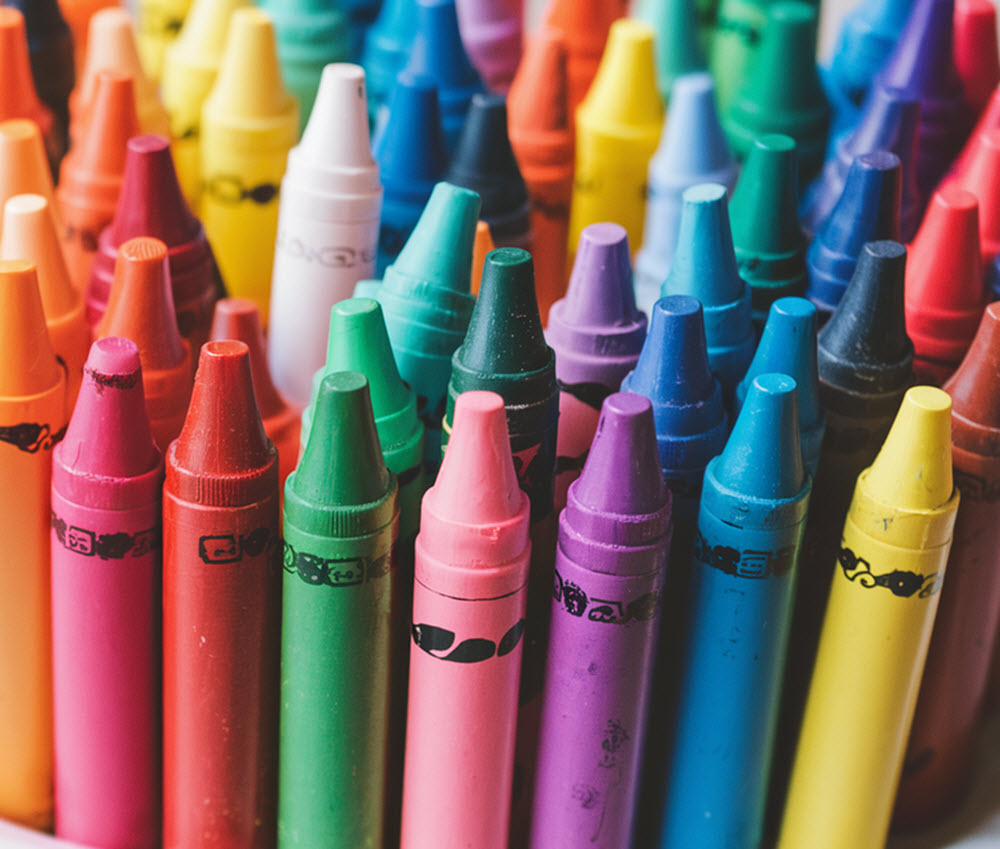Crayons
Contents
Crayons, the ubiquitous artist’s tool, have been a staple in children’s art supplies for over a century, yet they are often overlooked or taken for granted. However, their impact on the broad landscape of art and creativity is far greater than one might initially think. From fostering early childhood development to being a medium of expression for accomplished artists, crayons’ inspiring journey warrants some exploration.
In contemporary English, the term crayon typically conjures up the standard wax crayon suitable for children. Crayons intended for children are often around 3.5 inches long and comprised chiefly of paraffin wax and pigment.
Crayons differ from classic pastels in that pastels have their pigment mixed with a dry binder such as gum arabic. It should be noted, however, that oil pastels are also available, and the binder is a blend of wax and oil.

The History of Crayons
The history of crayons is not entirely clear, but we do know that the ancient Egyptians used a mixture beeswax and pigments to write on stone and papyrus.
Both the ancient Egyptians, Greeks and Romans used encaustic painting – a method where hot beeswax combined with pigment is utilized to better bind colour in stone. A heat source is used to “burn in” the image, thus fixing it in place. It should be noted that this process did not involve making modern-style semi-hard elongated crayons that you hold in your hand.
The French word crayon originally meant “chalk pencil” and has been in use since around the 1500s. In French, craie means chalk.
Modern-style crayons began to appear in the 1800s, and the famous Crayola was launched by Binney & Smith in 1903.
Impact on Early Childhood Development
For parents, crayons may seem like merely a tool to keep children entertained. But the perks of colouring with crayons stretch beyond just fun and amusement. It’s an important part of early childhood development and learning. Firstly, crayons help enhance motor skills. When a toddler grabs a crayon and starts moving it across paper, they are improving their hand-eye coordination and honing their fine motor skills. Secondly, with the wide range of colours available, crayons are an excellent tool for teaching children about different colours, fostering a better understanding of the concept of colour mixing. Lastly, crayons stimulate creativity and imagination. Where a blank paper represents the possibility of creation, a box of crayons serves as a tool to bring those creations to life.
Nowaways, crayons are available at various price levels, making them accessible for many parents, schools, and facilities for children. Crayons are easy to use even for fairly small children and toxic-free options are available. Crayons are blunt, unlike sharp-pointed pencils and pens, and compared to many other types of paint and markers, crayons are less messy.

Crayons and art
Though often seen as children’s art tool, crayons are by no means limited to this. Many adults, including professional artists, have embraced crayons for their potential in achieving unique effects and textures. One example is the artist Don Marco, also known as the Master Crayola, who made a name for himself for his detailed and beautiful crayon art. It goes on to show how crayons can become a formidable medium of artistry in skilled hands.
Several hundred years ago, the French artists François Clouet (1510-1572) and Nicholas L’agneau (1590-1666) used crayons in some of their art projects. Clouet used wax crayons for making portraits of models, and they became so captivating that Clouet was hired as a royal court painter. He even caught the attention of King Henry V who knighted him. L’agneau used wax crayons for the outlines when making portraits, and he became famous for making portraits where the depicted person looks surprised or as if they are unaware of their surroundings.
In the 20th century, the self-taught African-American preacher Sister Gertrude Morgan (1900-1980) created crayon drawings to help with her Bible teaching in New Orleans, USA. Eventually, she caught the attention of gallery owner E. Lorenz Borenstein and became a celebrated religious folk-artist. Some of her art can be seen at the American Folk Art Museum in New York.
Health and environmental concerns
With the rising concern for the environment, the art industry also has a role to play. Most crayons consist predominantly of paraffin wax, non-toxic pigments and a paper wrapping, and are not considered overly harmful to the environment – especially compared to certain other art supply products. It should be noted, however, that paraffin is a petroleum product.
Initiatives like The Crayon Initiative encourage recycling of old and broken crayons that would otherwise end up in landfills. These are remanufactured into new crayons and distributed to children’s hospitals across the U.S., thereby reducing waste and bringing joy to children.
In May 2000, concerns rose regading the potential inclusion of asbestos in several popular crayon brands, after the Seattle Post-Intelligencer reported that three brands of crayons had tested positive for asbestos. In June, the U.S. Consumer Product Safety Commission published the results of a follow-up study where traces of asbestos fibers had been found in three crayons – together with transitional fibers that can be misinterpreted as asbestos. The Commission declared the health risk to be low, but also asked crayon manufacturers to reformulate.